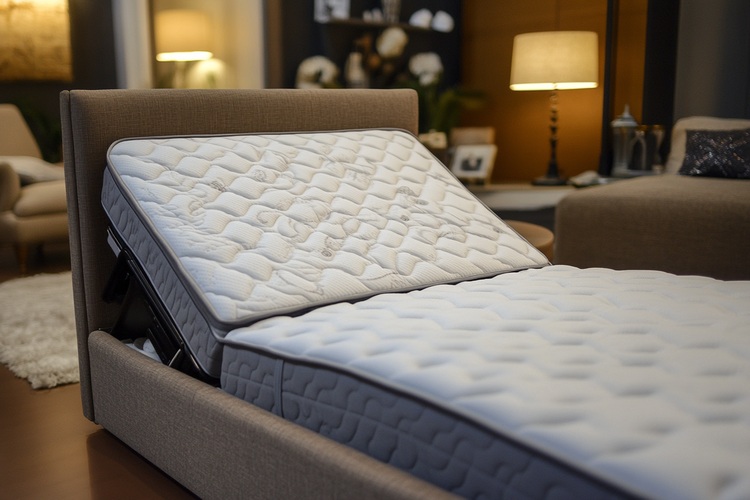Smart Beds: How They Work and What to Consider
Smart beds combine traditional mattress and frame design with connected features that aim to support comfort, sleep tracking, and integration with home automation. These systems range from adjustable bases with basic motors to mattresses with embedded sensors for heart rate, respiration, and movement. Understanding what features matter for your bedroom and lifestyle helps you choose the right combination of bed and smart technology.

This article is for informational purposes only and should not be considered medical advice. Please consult a qualified healthcare professional for personalized guidance and treatment.
What is a smart bed?
A smart bed is a sleep product that incorporates sensors, actuators, or networked control into the mattress or base. Core components often include adjustable support zones, pressure-sensing layers, and connectivity to apps or smart-home platforms. Some models use motors to change head or foot angle, while others monitor movement and physiological signals to generate sleep reports. The purpose is usually to enhance comfort, provide data about sleep patterns, and offer hands-free adjustments through voice assistants or mobile apps.
How does smart technology change furniture?
Smart technology transforms bed furniture by adding powered mechanisms, embedded electronics, and modular components. Traditionally static frames now include electric lifts, under-bed lighting, USB outlets, and cable management. Materials and design must accommodate wiring, motors, and access panels without compromising aesthetics. When integrating smart features into bedroom furniture, consider compatibility with existing pieces, the weight-bearing capacity of frames, and whether a headboard or storage base needs modification to house electronics safely.
How do smart beds fit in your bedroom?
Planning placement and dimensions is important because smart beds often require clearance for powered bases and ventilation for electronics. Measure doorway and stair access for delivery and assembly. Pay attention to mattress thickness and base height, which affect sheets and bed rails. Smart bed components sometimes need a nearby outlet or a strong Wi‑Fi signal; if your bedroom has weak connectivity, range extenders or wired options may be necessary. For homes with limited space, look for low-profile motorized bases or mattress-only sensor systems.
Can smart beds improve sleep?
Smart beds can provide useful feedback and adjustable comfort that may support better sleep habits for some people. Features like adjustable elevation, temperature regulation, and targeted pressure relief can address comfort-related awakenings. Sleep-tracking functions report movement, sleep stages, and sometimes respiratory patterns, which can help users spot trends. However, data from consumer devices is not a medical diagnosis; subjective comfort, consistent sleep schedules, and broader health factors remain key drivers of sleep quality. Use tracking data as one part of a holistic approach to sleep improvement.
What to consider before buying smart technology for sleep?
Evaluate these factors before purchasing: mattress type (memory foam, latex, hybrid) and how it interacts with motorized bases; compatibility with your existing bed frame and bedroom layout; the quality of the companion app and data privacy policies; warranty, trial periods, and customer service; noise levels from motors; and ease of maintenance. If you share a bed, look for split adjustable bases or dual-zone controls to accommodate both sleepers. Also check power requirements and whether backup options exist for power outages.
Maintenance, privacy, and local services
Smart beds require occasional maintenance: motor lubrication, firmware updates, and mattress care per manufacturer instructions. Electronics add considerations around data security—review how your sleep data is stored, whether it is shared with third parties, and what encryption is used. For installation, repair, or disposal, search for local services or certified installers in your area who are experienced with smart furniture and powered bases. If a product interfaces with health-related apps, discuss data-sharing practices with your provider.
Conclusion
Smart beds blend mattress design with connected features to offer adjustable comfort, data-driven insights, and integration with smart-home systems. They introduce new considerations for furniture compatibility, room layout, power and connectivity, and data privacy. For many people, the most useful parts are practical: adjustable support, improved comfort for specific issues, and consistent tracking to inform habits. Evaluate features against your bedroom setup and sleep priorities, and treat device-generated health information as complementary to professional medical advice.






